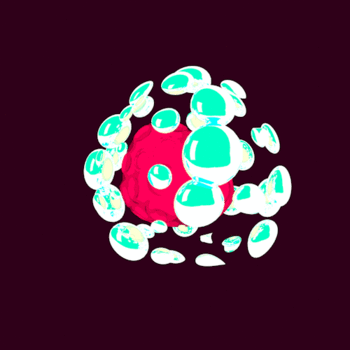How do you determine if a molecule is linear?
3 Answers
See below.
Explanation:
You would need to take into consideration the Valence Shell Electron Repulsion Theory, or VSEPR Theory.
Here is a sample of a VSEPR Theory table:
 )
)
The VSEPR Table used by your teacher may look a little different, but it is the same concept (Just keep in mind that "Bent"="Angular").
Based on this, you should be able to find your answer.
I hope that helps!
Determine if the molecule is linear by looking at the VSEPR theory
Explanation:
The Valence Shell Electron Pair Repulsion theory outlines this by its very confusing acronym and name.
Basically, just remember that lone pairs repel each other. Lone pairs are electrons with a negative charge, and since negative and negative repel (while positive charge would attract to negative) thus the reason for the repelling.
In other words, electrons that are not paired up will try to get away from each other as much as possible.
So, if you have a compound that has no lone pairs of electrons, like
Other compounds,
Most compounds like
Another way to look at this is to look at the base. So for example, water. Although
Hope this helps!
Typically, the determination of molecular geometry involves the 3 dimensional arrangement of substrates attached (bonded) to a 'central' element of a 'binary' structure. The binary consideration for
a linear molecular geometry would be empirically based upon an
the following procedure can be applied to X-A-Y structures where there are different substrates attached to the central element.
For binary systems two items in the structure need be determined ...
(1) The number of bonded pairs of electrons
(2) The number of non-bonded pairs of electrons
The number of bonded pairs is equal to the number of substrates attached to the central element of the binary compound and represents the number of 'Bonded Pairs' of electrons.
For
#BPrs = 2.
The number of non-bonded pairs is a bit more involved in that one needs to use the expression
Valence Electrons = 1Be + 2Cl = 1(2) + 2(7) = 16 valence electrons
Substrate Electrons* = 2Cl = 2(8) = 16 electrons
*when conforming to the octet rule. (Hydrogen fills at 2 electrons)
NBPrs =
Total electron pairs => Parent structure => BPr + NBPr = 2 + 0 = 2
=>
That is, Cl - Be - Cl is a linear molecule.
To truely understand this concept apply this to
Is
Bonded Pair = 2
NonBonded Pair = 1*
Total electron prs = 2 + 1 = 3 =>
NBPr =
V = Sn + 2Cl = 4 + 2(7) = 18
S = 2Cl = 2(8) = 16
 )
)
This can be applied to many structures to define geometry. The following is a table illustrating the geometries of


